|
Poetry and Yoga
"Poetic autoethnography provides a research methodology to explore yoga as a mind-body intervention that creates sanctuary. Using this qualitative method and retrieving data from my personal journals, daily workout journals, experiences as a lesbian-identified participant in yoga classes, and yoga instructor, I turn the research lens on myself in order to examine my sociological life story. At a critical time in my life when I was struggling with the fragmentation, anxiety, and despair resulting from dealing with homophobia in a heteronormative world, yoga provided sanctuary for me. My yoga practice increased my self-efficacy, providing transferable techniques for finding refuge within myself, irrespective of the adversity I was facing in my life. Places of sanctuary are critical for members of minority groups who often face marginalization and oppression, which compromise their well-being." - Myers, K. (2017). "Yoga as Sanctuary: A Valuable Mind-Body Intervention for the Lesbian Community." Int J Yoga Therap 27(1): 15-24. https://www.ncbi.nlm.nih.gov/pubmed/29131739
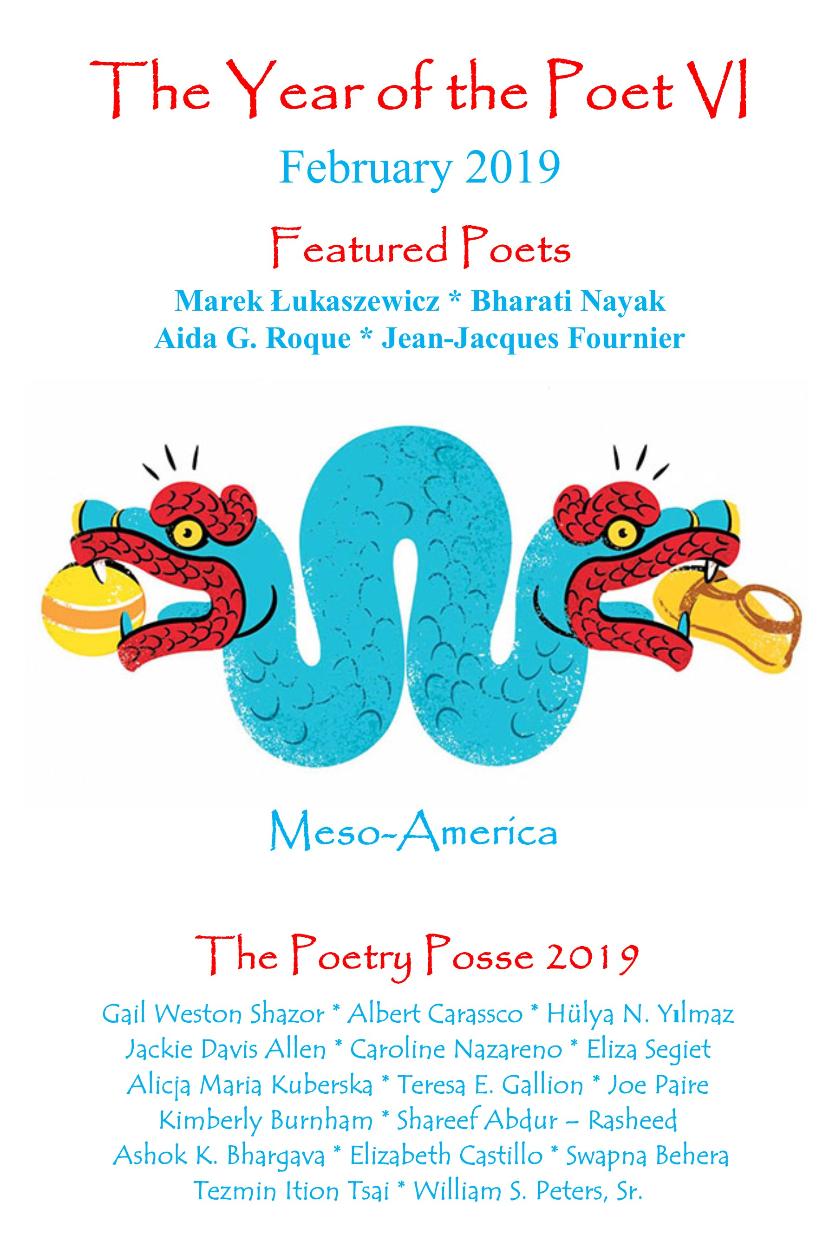
Poets of the 2019 Inner Child Poetry Posse, featured in The Year of The Poet: Gail Weston Shazor, Albert ‘Infinite’ Carrasco, Joe DaVerbal Minddancer, Caroline 'Ceri Naz' Nazareno, Elizabeth Castillo, Tezmin Ition Tsai, Ashok K. Bhargava, Shareef Abdur–Rasheed, Kimberly Burnham, Jackie Allen, Teresa E. Gallion, Hulya N. Yilmaz, Alicja Maria Kuberska, Swapna Behera, Eliza Segiet, William S. Peters, Sr. Featured Poets: Marek Lukaszewicz, Aida G. Roque, Bharati Nayak, Jean-Jacques Fournier.
The Poetry Posse 2019
The Year of the Poet project was the brain-child of Jamie Bond and William S. Peters, Sr. The original vision was to commit themselves to writing and publishing a book a month for the year of 2014. In further discussion the vision expanded to include the other Gifted & Talented Writers you see below. The objective is to bring the Poetry Community together with the various cross demographic representations found in Gender, Religion, Geography, Culture and Ethnicity. We hope you enjoy the myriad of perspectives represented here. Thank You, Inner Child Press International. Gail Weston Shazor. This is a creative promise ~ my pen will speak to and for the world. Enamored with letters and respectful of their power, I have been writing for most of my life. A mother, daughter, sister and grandmother I give what I have been given, greatfilledly. Author of "An Overstanding of an Imperfect Love" & Notes from the Blue Roof Lies My Grandfathers Told Me available at Inner Child Press. Albert ‘Infinite’ Carrasco. I'm a project life philanthropist, I speak about the non ethical treatment of poor ghetto people. Why? My family was their equal, my great grandmother and great grandfather was poor, my grandmother and grandfather, my mother and father, poverty to my family was a sequel, a traditional Inheritance of the subliminal. I paid attention to the decades of regression, i tried to make change, but when I came to the fork in the road and looked at the signs that read wrong < > right, I chose the left, the wrong direction, because of street life interactions a lot around me met death or incarceration. I failed myself and others. I regret my decisions, I can't reincarnate dead men, but I can give written visions in laymens. I'm back at that fork in the road, instead of it saying wrong or right, I changed it, now it says dead men < > life. Infinite poetry @lulu.com Alcarrasco2 on YouTube Infinite the poet on reverbnation Infinite Poetry http://www.lulu.com/us/en/shop/al-infinitecarrasco/infinite-poetry/paperback/product-21040240.html Joseph L Paire’ aka Joe DaVerbal Minddancer is a quiet man, born in a time where civil liberties were a walk on thin ice. He's been a victim of his own shyness often sidelined in his own quest for love. He became the observer, charting life's path. Taking note of the why, people do what they do. His writings oft times strike a cord with the dormant strings of the reader. His pen the rosined bow drawn across the mind. He comes full-frontal or in the subtlest way, always expressing in a way that stimulate the senses. www.facebook.com/joe.minddancer Caroline 'Ceri Naz' Nazareno born in Anda, Pangasinan known as a ‘poet of peace and friendship’, is a multi-awarded poet, journalist, editor, publicist, linguist, educator, and women’s advocate. Graduated cum laude with the degree of Bachelor of Elementary Education, specialized in General Science at Pangasinan State University. Ceri have been a voracious researcher in various arts, science and literature. She volunteered in Richmond Multicultural Concerns Society, TELUS World Science, Vancouver Art Gallery, and Vancouver Aquarium. She was privileged to be chosen as one of the Directors of Writers Capital International Foundation ( WCIF ), Member of the Poetry Posse, one of the Board of Directors of Galaktika ATUNIS Magazine based in Albania; the World Poetry Canada and International Director to Philippines; Global Citizen’s Initiatives Member, Association for Women’s rights in Development ( AWID ) and Anacbanua. She has been a 4th Placer in World Union of Poets Poetry Prize 2016, Writers International NetworkCanada ‘’Amazing Poet 2015’’, The Frang Bardhi Literary Prize 2014 (Albania), the sair-gazeteci or Poet-Journalist Award 2014 (Tuzla, Istanbul, Turkey) and World Poetry Empowered Poet 2013 (Vancouver, Canada). Elizabeth Esguerra Castillo is a multi-awarded and an Internationally-Published Contemporary Author/Poet and a Professional Writer / Creative Writer / Feature Writer / Journalist / Travel Writer from the Philippines. She has 2 published books, "Seasons of Emotions" (UK) and "Inner Reflections of the Muse", (USA). Elizabeth is also a coauthor to more than 60 international anthologies in the USA, Canada, UK, Romania, India. She is a Contributing Editor of Inner Child Magazine, USA and an Advisory Board Member of Reflection Magazine, an international literary magazine. She is a member of the American Authors Association (AAA) and PEN International. Web links: Facebook Fan Page https://free.facebook.com/ElizabethEsguerraCastillo Google Plus https://plus.google.com/u/0/+ElizabethCastillo Tzemin Ition Tsai (蔡澤民博士) was born in Taiwan, Republic of China, in 1957. He holds a Ph.D. in Chemical Engineering and two Masters of Science in Applied Mathematics and Chemical Engineering. He is an associate professor at the Asia University (Taiwan), editor of “Reading, Writing and Teaching” academic text. He also writes the long-term columns for Chinese Language Monthly in Taiwan. He is a scholar with a wide range of expertise, while maintaining a common and positive interest in science, engineering and literature member. He has won many national literary awards. His literary works have been anthologized and published in books, journals, and newspapers in more than 40 countries and have been translated into more than a dozen languages. Ashok K. Bhargava is a poet, writer, community activist, public speaker, management consultant and a keen photographer. Based in Vancouver, he has published several collections of his poems: Riding the Tide, Mirror of Dreams, A Kernel of Truth, Skipping Stones, Half Open Door and Lost in the Morning Calm. His poetry has been published in various literary magazines and anthologies. Ashok is a Poet Laureate and poet ambassador to Japan, Korea and India. He is founder of WIN: Writers International Network Canada. Its main objective is to inspire, encourage, promote and recognize writers of diverse genres, artists and community leaders. He has received many accolades including Nehru Humanitarian Award for his leadership of Writers International Network Canada, Poets without Borders Peace Award for his journeys across the globe to celebrate peace and to create alliances with poets, and Kalidasa Award for creative writings. Shareef Abdur-Rasheed, AKA Zakir Flo was born and raised in Brooklyn, New York. His education includes Brooklyn College, Suffolk County Community College and Makkah, Saudi Arabia. He is a Veteran of the Viet Nam era, where in 1969 he reverted to his now reverently embraced Islamic Faith. He is very active in the Islamic community and beyond with his teachings, activism and his humanity. Shareef’s spiritual expression comes through the persona of "Zakir Flo" . Zakir is Arabic for "To remind". Never silent, Shareef Abdur-Rasheed is always dropping science, love, consciousness and signs of the time in rhyme. Shareef is the Patriarch of the Abdur-Rasheed Family with 9 Children (6 Sons and 3 Daughters) and 41 Grandchildren (24 Boys and 17 Girls). For more information about Shareef, visit his personal FaceBook Page at : https://www.facebook.com/shareef.abdurrasheed1 https://zakirflo.wordpress.com Kimberly Burnham. Find yourself in the pattern. As a 28-year-old photographer, Kimberly Burnham appreciated beauty. Then an ophthalmologist diagnosed her with a genetic eye condition saying, "Consider life, if you become blind." She discovered a healing path with insight, magnificence, and vision. Today, 33 years later, a poet and neurosciences expert with a PhD in Integrative Medicine, Kimberly's life mission is to change the global face of brain health. Using health coaching, Reiki, Matrix Energetics, craniosacral therapy, acupressure, and energy medicine, she supports people in their healing from brain, nervous system, and chronic pain issues. As managing editor of Inner Child Magazine, Kimberly's 2019 project is peace, language, and visionary poetry with her recently published book, Awakenings: Peace Dictionary, Language and the Mind, a Daily Brain Health Program. http://www.NerveWhisperer.Solutions https://www.linkedin.com/in/kimberlyburnham Jackie Davis Allen, otherwise known as Jacqueline D. Allen or Jackie Allen, grew up in the Cumberland Mountains of Appalachia. As the next eldest daughter of a coal miner father and a stay at home mother, she was the first in her family to attend and graduate from college. Her siblings, in their own right, are accomplished, though she is the only one, to date, that has discovered the gift of writing. Graduating from Radford University, with a Bachelors of Science degree in Early Education, she taught in both public and private schools. For over a decade she taught private art classes to children both in her home and at a local Art and Framing Shop where she also sold her original soft sculptured Victorian dolls and original christening gowns. She resides in northern Virginia with her husband, taking much needed get-aways to their mountain home near the Blue Ridge Mountains, a place that evokes memories of days spent growing up in the Appalachian Mountains. A lover of hats, she has worn many. Following marriage to her college sweetheart, and as wife, mother, grandmother, teacher, tutor, artist, writer, poet and crafter, she is a lover of art and antiques, surrounding herself, always, with books, seeking to learn more. In 2015 she authored Looking for Rainbows, Poetry, Prose and Art, and in 2017, Dark Side of the Moon. Both books of mostly narrative poetry were published by Inner Child Press and were edited by hulya n. yilmaz. Teresa E. Gallion was born in Shreveport, Louisiana and moved to Illinois at the age of 15. She completed her undergraduate training at the University of Illinois Chicago and received her master’s degree in Psychology from Bowling Green State University in Ohio. She retired from New Mexico state government in 2012. She moved to New Mexico in 1987. While writing sporadically for many years, in 1998 she started reading her work in the local Albuquerque poetry community. She has been a featured reader at local coffee houses, bookstores, art galleries, museums, libraries, Outpost Performance Space, the Route 66 Festival in 2001 and the State of Oklahoma’s Poetry Festival in Cheyenne, Oklahoma in 2004. She occasionally hosts an open mic. Teresa’s work is published in numerous Journals and anthologies. She has two CDs: On the Wings of the Wind and Poems from Chasing Light. She has published three books: Walking Sacred Ground, Contemplation in the High Desert and Chasing Light. Chasing Light was a finalist in the 2013 New Mexico/Arizona Book Awards. The surreal high desert landscape and her personal spiritual journey influence the writing of this Albuquerque poet. When she is not writing, she is committed to hiking the enchanted landscapes of New Mexico. You may preview her work at http://bit.ly/1aIVPNq or http://bit.ly/13IMLGh Hulya N. Yilmaz. A retired Liberal Arts professor, hülya n. yılmaz [sic] is Co-Chair and Director of Editing Services at Inner Child Press International, and a literary translator. Her poetry has been published in an excess of sixty anthologies of global endeavors. Two of her poems are permanently installed in TelePoem Booth, a nation-wide public art exhibition in the U.S. She has shared her work in Kosovo, Canada, Jordan and Tunisia. hülya has been honored with a 2018 WIN Award of British Colombia, Canada. She is presently working on three poetry books and a short-story collection. hülya finds it vital for everyone to understand a deeper sense of self and writes creatively to attain a comprehensive awareness for and development of our humanity. hülya n. yılmaz, Ph.D. Writing Web Site hulyanyilmaz.com Editing Web Site hulyasfreelancing.com Alicja Maria Kuberska. Awarded Polish poetess, novelist, journalist, editor. She was born in 1960, in Świebodzin, Poland. She now lives in Inowrocław, Poland. In 2011 she published her first volume of poems entitled: “The Glass Reality”. Her second volume “Analysis of Feelings”, was published in 2012. The third collection “Moments” was published in English in 2014, both in Poland and in the USA. In 2014, she also published the novel - “Virtual roses” and volume of poems “On the border of dream”. Next year her volume entitled “Girl in the Mirror” was published in the UK and “Love me” , “(Not )my poem” in the USA. In 2015 she also edited anthology entitled “The Other Side of the Screen”. In 2016 she edited two volumes: “Taste of Love” (USA), “Thief of Dreams” ( Poland) and international anthology entitled “ Love is like Air” (USA). In 2017 she published volume entitled “View from the window” (Poland). She also edits series of anthologies entitled “Metaphor of Contemporary” (Poland) Her poems have been published in numerous anthologies and magazines in Poland, the USA, the UK, Albania, Belgium, Chile, Spain, Israel, Canada, India, Italy, Uzbekistan, Czech Republic, South Korea and Australia. She was a featured poet of New Mirage Journal ( USA) in the summer of 2011. Alicja Kuberska is a member of the Polish Writers Associations in Warsaw, Poland and IWA Bogdani, Albania. She is also a member of directors’ board of Soflay Literature Foundation. Swapna Behera is a bilingual contemporary poet, author, translator and editor from Odisha, India .She was a teacher from 1984 to 2015 . Her stories, poems and articles are widely published in National and International journals, and ezines, and are translated into different national and International languages. She has penned four books. She was conferred upon the Prestigious International Poesis Award of Honor at the 2nd Bharat Award for Literature as Jury in 2015, The Enchanting Muse Award in India World Poetree Festival 2017, World Icon of Peace Award in 2017, and the Pentasi B World Fellow Poet in 2017.. She is the recipient of Gold Cross Of Wisdom Award ,the medal for The Best Teachers of the World from World Union of Poets in 2018, and The LIfe time Achievement Award ,The Best Planner Award, The Sahitya Shiromani Award, ATAL BiHARI BAJPAYEE AWARD 2018, Ambassador De Literature Award 2018 .She is the Ambassador of Humanity by Hafrikan Prince Art World Africa 2018 and an official member of World Nation’s Writers Union ,Kazakhstan2018. At present she is the manager at Large, Planner and Columnist of The Literati, the administrator of several poetic groups ,the member of the Special Council of Five of World Union of Poets and the Cultural Ambassador of Inner Child Press U.S. Eliza Segiet. After earning a Master's Degree in Philosophy at the Jagiellonian University in Krakaw, Poland, Eliza Segiet proceeded with her post-graduate studies in the fields of Cultural Knowledge, Penal Revenue and Economic Criminal Law, Arts and Literature and Film and Television Production in the Polish city, Lodz. With specific regard to her creative writings, the author describes herself as being torn in her passion for engaging in two literary genres: Poetry and Drama. A similar dichotomy from within is reflected on Segiet’s own words about her true nature: She likes to look at the clouds, but she keeps both of her feet set firmly on the ground. The author describes her worldview as being in harmony with that of Arthur Schopenhauer: "Ordinary people merely think how they shall 'spend' their time; a man of talent tries to 'use' it". William S. Peters, Sr. Bill’s writing career spans a period of over 50 years. Being first Published in 1972, Bill has since went on to Author in excess of 40 additional Volumes of Poetry, Short Stories, etc., expressing his thoughts on matters of the Heart, Spirit, Consciousness and Humanity. His primary focus is that of Love, Peace and Understanding! Bill says . . . I have always likened Life to that of a Garden. So, for me, Life is simply about the Seeds we Sow and Nourish. All things we “Think and Do”, will “Be” Cause and eventually manifest itself to being an “Effect” within our own personal “Existences” and “Experiences” . . . whether it be Fruit, Flowers, Weeds or Barren Landscapes! Bill highly regards the Fruits of his Labor and wishes that everyone would thus go on to plant “Lovely” Seeds on “Good Ground” in their own Gardens of Life! to connect with Bill, he is all things Inner Child www.iaminnerchild.com Personal Web Site www.iamjustbill.com
0 Comments
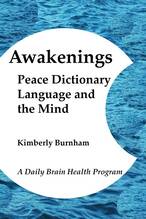
Research Abstract:
"We co-designed and piloted 'Festival in a Box', an outreach programme to enable socially isolated people with dementia to engage with and enjoy cultural activities in their homes. It comprised 3-4 weekly home visits, each led by a professional artist to create art works using materials brought in 'the box'. Activities included music, poetry, pottery, crafts and photography. We qualitatively interviewed 13 participants (6 people with dementia, 4 artists, 3 befrienders). Six participants with dementia completed, enjoyed and engaged with the planned visits. Main themes were: engagement, reflection on value of previous cultural activities, precariousness and isolation in current neighbourhood and the importance of a voice and being heard. Befrienders reported their preconceptions of what participants could do were challenged. Artists reported shifts in their preconceptions about dementia and the influence of the project on their professional practice. We propose that the 'Festival in a Box' pilot study suggests a means through which community arts festivals could work with socially isolated people with dementia to contribute to the creation of 'Dementia Friendly Communities'. A larger-scale pilot study is now needed to develop this hypothesis." —Eades, M., K. Lord, et al. (2018). "'Festival in a Box': Development and qualitative evaluation of an outreach programme to engage socially isolated people with dementia." Dementia (London) 17(7): 896-908. https://www.ncbi.nlm.nih.gov/pubmed/27466377 [More brain health exercises].
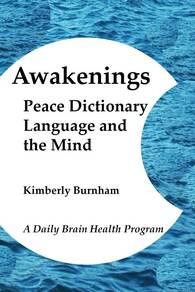
"This paper is a humanities-based inquiry, applying Huizinga's framework of homo ludens ("man the player") to consider "play" in the context of two participatory arts programs (TimeSlips and the Alzheimer's Poetry Project) for people living with dementia. "Play," according to this Dutch historian, is at the heart of human activity and what gives meaning to life. Despite empirical research on play across the life course, play in dementia care is a relatively new idea. In addition, there is a dearth of reports based on humanistic inquiry which has slightly different goals than the growing body of qualitative and quantitative studies of participatory arts interventions. Play is not used to infantilize and trivialize people living with dementia but as a way to explore potential for expression, meaning-making, and relationship-building in later life. The arts programs were conducted at two residential care facilities, Scharwyerveld and De Beyart, in the Netherlands over 10 weeks. Close readings of the transcripts and notes from the programs resulted in three observations: people learned to play again, there is power in playing together, and play often led to expressions of joy. Overall, the notion of play may be a helpful framework for future research into innovative arts-based approaches to dementia care." - Swinnen, A. and K. de Medeiros (2018). ""Play" and People Living With Dementia: A Humanities-Based Inquiry of TimeSlips and the Alzheimer's Poetry Project." Gerontologist 58(2): 261-269. https://www.ncbi.nlm.nih.gov/pubmed/28329857
A Piece of Peace
Absence of war or other hostilities. considered as a unit or an element of a larger thing, quantity, or class; a portion: a piece of string An agreement or a treaty to end hostilities A coin a ten-cent piece Freedom from quarrels and disagreement; harmonious relations: roommates living in peace with each other. A portion or part that has been separated from a whole: a piece of cake. Public security and order the peace. an object that is one member of a group or class: a piece of furniture.
Recently a written language again
"kev sib haum xeeb" or "kev tiaj tus" or "kev thajyeeb nyab xeeb" is peace in Hmong sometimes it takes a long word sometimes a lot of words to call peace into reality Thaaj yeeb peace in the Green or Blue Miao dialect of Hmong pronounced "tahng ying" one letter different in white "thaj yeeb" orally said "tah ying" or "kev sib haum Zeeb" is peace sometimes spelled "kev siab tus" in the White Miao dialect of Hmong or Hmong Daw at times "nyob kaj siab lug" is used peace in the white dialet A Hmong folktale says Hmong used to have a written language important information written down in a treasured book the tale explains cows and rats ate the book the Hmong language exclusively oral from that point onwards Imagine if a cow or a rat ate your only book what words would you teach your children with no way to check the truth of your words would you make up words and meanings
Set up a Free Brain Health Consultation Today
NerveWhisperer@gmail.com
Kev sib haum xeeb White Miao dialect of Hmong or Hmong Daw
"Kev sib haum xeeb" (peace), "Kev tiaj tus", "Kev thajyeeb nyab xeeb" or "Ntiaj teb no" in Hmong or Hmoob spoken in China, Vietnam, Laos, and Thailand. "Thaaj yeeb" [tahng ying] (peace) in the Green or Blue Miao dialect of Hmong. "Thaj yeeb" [tah ying], "Kev sib haum zeeb" (peace), "Kev siab tus" or "Nyob kaj siab lug" in the White Miao dialect of Hmong or Hmong Daw at times. White Hmong spoken in Northern Laos, a Hmong-Mien language.
Memory Exercise:
What word for peace would you choose if you made up your own language? How would you spell "peace" if you had only ever heard the word and never read it? imagine if a cow or a rat ate your only book what words would you teach your children with no way to check the truth of your words would you make up words and meaning Make up a language describe the community that speaks that language what are the words for peace calm quiet tranquil Sometimes it takes more than one word to get the meaning across. It takes a community of peace to write peace in some languages. It is not a bad thing it just takes more people more connections more sounds to call peace into being. Say the word peace in whatever language you would like as loudly as you can. Tell someone about your commitment to peace and to health for yourself and others.
When Laws Collide, Mägaya Peace In Yolngu or Yolŋu Australia (Memory Exercises)
"Mägaya mäwaya" one of the first words we learn a woman in Yirrkala tells peace peace a legal term meaning the state of peace achieved when laws are in place If you've ever been down to a lake or the sea in the morning it's perfectly flat that's " mägaya mäwaya " Law creates that peace you are protected everything is "ŋoy-dharraḏa" emotionally serene at peace calm and burrmiḏi peaceful or "mutitj" calm and peaceful "beḻaŋ" calm and quiet But when two systems of law operate in one community tranquility is not the new conflicts with law and order that's been there in Australia for 40,000 years
Set up a Free Brain Health Consultation Today
NerveWhisperer@gmail.com
Memory Exercise
Visualize a body of water at peace. What does the surface look like? What color are the water and the sky? Are there other people or animals around? Is the water moving or completely still?
Does adding a vowel make a language
there is a saying the difference between a dialect and a language a language has an army Is "pokój" peace in Polish so different from "pokoju" peace in Silesian with it's extra vowel sound No one agrees whether Silesian is a dialect of Polish or a separate language influenced by Polish and German "Pokój" is also peace in Upper Sorbian or the Wendish spoken in Germany and in Slovak uttered in Slovakia same words different languages And then there is an extra consonant "spokoj" peace in Bosnian which most agree is a different language
Pokoju in Silesian (Poland)
"Pokoju" (peace) in Silesian spoken in Poland (Silesian Voivodeship, Opole Voivodeship) and Czech Republic (Moravia–Silesia, Jeseník). "Pokój" (peace) in Upper Sorbian (Wendish) spoken in Germany "Pokój" (peace) in Polish spoken in Poland, Lithuania, Belarus, Ukraine, Czech Republic, Slovakia. "Pokój" (peace) in Slovak spoken in Slovakia. "Spokoj" (peace) in Bosnian spoken in Bosnia. Linguistic Conquest
Poem by Kimberly Burnham on Poemhunter Before Spanish Caribbean mother's sang to their babies angry merchants shouted lovers whispered tribesman negotiated in so many different now forgotten languages obscured by the words rolling off the tongues of Spanish conquistadors English sailors French traders and Dutch merchants Spanish now voiced by the most on the largest Cuba and Dominican Republic where men and women discuss Paz Peace in English the state language of many Antigua, Bahamas, Barbados, British Virgin Islands, Cayman Islands, Dominica, Jamaica and all the Saints, sharing Puerto Rico with Spanish On the compass points peace in European languages standing strong in the Caribbean Spanish pas to the West and Central English peace to the North and East French paix sharing the East and Central Dutch vrede to the South Mother's chant paix to their babies in Haiti, Martinique, Guadeloupe, and St. Martin. Vrede in Dutch full of good intentions in Curacao, St Maarten and tiny islands Indigenous languages buried deep some pushing up expanding a few lay dying several birthing a new creole gumbo Note: Mir or Мир or Mip (peace) in Russian and Russian influenced languages spoken in Russia (Europe & Asia), Ukraine, Serbia, Czech Republic, Bosnia, Bulgaria, Belarus, Montenegro, Macedonia, Moldova, Estonia, Latvia Lithuania, Armenia, Azerbaijan, Gerogia, Central Asia, Croatia, Slovenia, Poland and beyond. Mir Peace, A Word Study In Humanity's Connections
Poem by Kimberly Burnham on Poemhunter Disguised in Cyrilic unfamiliar Russian letters мир mir mip means peace as Russia and the Ukraine struggle against each the same word waiting between Ancient records evidence mir peace in Serbia dances across the page dressed in a Cyrillic alphabet Roman letters marching to the same beat as English Arabic script flowing peace from right to left Mir peace in the Czech Republic and Bosnian words of peace in Bulgaria Belarus Serbia Montenegro and Macedonia Bulgarian mir spoken in hope-filled tones in Bulgaria TurkeyRomania Russian mir given voice in so many lands Moldova Belarus Estonia Latvia Lithuania Armenia Azerbaijan Georgia and Central Asia mir to all in these lands In Croatia mir written in Roman letters familiar to a Westerner words still in Croatian and Czech again mir in Slovene peace moves on an out breath in Slovenia Austria and Italy mir peace borrowed by the Portuguese Mir a common Muslim family name in Pakistan Bangladesh and India a short form of Arabic's Amir prince Hebrews' Amir exalted summit of a tree or mountain while old Polish personal names miron hold fast to the elements of peace quiet esteem Miron or myron from myrrh a fragrant resin incense perfume wafts over the land lubomir loves peace in Polish miroslav a peace celebration casimir the Polish bringer of peace miro medieval personal names of Germanic origin border on the French variant of mire all the while zamir for peace in slavonic resembles a common male Muslim name zameer ضمیر heart or conscience Russion мир also means world the perspective of a village nestled in a beautiful countryside local people live in communal proximity sharing limited resources heat in harsh winters exclusion from the mir almost certain death Mir the name of a space station peacefully floating in the air we all breath over a land we share Kimberly Burnham Step 1: Assess.Your State of Being [Access the Free video class]
Step 2: Write 8 health goals, big and small. 1. Enjoy better walking. 2. Have less pain. 3. Have more energy. 4. Stop eating junk food. 5. Sleep better without night terrors. 6. Eliminate tremors. 7. Get rid of shoulder tension. 8. End back pain. Step 3: Rewrite the 8 health goals framed in a positive way. 1. Enjoy better walking. 2. Move comfortably. 3. Benefit from more energy. 4. Eat more vegetables and protein. 5. Sleep restfully and have great dreams. 6. Develop muscle strength and control. 7. Soften and relax my shoulders. 8. Flex and extend my spine with ease. Step 4: Make the goals measurable. Step 5: Pull Out the Verbs Strength enjoy walking move comfortably benefit and eat sleep rest dream develop and control soften and relax flex and extend Step 6: Write 8 health goals using vivid action words and joints or parts of the body doing the action Motion walk enjoy move smile in motion energetically walk dance bicycle gobble colorful vegetables crunch munch down proteins lay quietly dream vigorously achieve momentum orchestrate muscles like a symphony soften lower calm shoulders bend back and forth here and there with ease Step 7: Write 8 goals using sensory words like red, soft, or tingling. Balance and Flexibility walk gently strongly balanced over uneven surfaces smile eyes twinkling in motion walk energetically dance robust bicycle round and round gobble red apples green avocados yellow orange squash a rainbow of vegetables munch down cashews tortillas stir fried shhh quietly sleeping dreaming sunny warm dream delightful blue and green peaceful dreams orchestrate strong muscles demand cooperation bask in the loyalty of muscles following directions shoulders sigh getting out from under the burden tingling with success bend back and forth soft and flexible like green swaying bamboo Step 8: Add something to your "poem" about the mind or brain, what you are thinking as you accomplish your goal. Step 9: Write a poem as if you are describing yourself or another person doing the action. Mind’s Eye Imagery walking balanced taking wide steps sporting a twinkling smile moving energetically dancing robust bicycling round and round circulating dopamine sleeping dreaming delightfully flexing strong muscles demanding cooperation shoulders relaxing tingling with success bending back and forth soft and flexible Step 10: Write goal and a “poem” as if you have accomplished one of your goals. Noticing Changes Last week I started noticing the difference strength balance on uneven surfaces smiling I recall how far I have come motion smooth and easy for me now anything I want abundant energy walks dances and bicycles around me as I move through the world Red apples green avocadoes yellow orange squash a rainbow of vegetables satisfy me as I dream I remember last night's dream vivid colors words swirling movements flowing like silk in dreams and life I am master of my destiny movement walking running even head sitting on neck on shoulders strong flexible bamboo green and healthy better today than yesterday I walk Step 11: Notice what has changed in how you walk. Reevaluate. Walk and feel. How has each step changed? Step 12: Post your final visualization or “poem” to the community board. Declare your vivid vision of the future. Free Class at SkillShare (Video Presentation) Realistic Poetry International
'Why Poetry Matters' Book Anthology "We would like to take a moment to give a special thanks to all of the amazing poets who participated in this book. Each and every one of you did a fantastic job and made this a truly unforgettable experience. We sincerely appreciate all of your hard work and creativity in contributing towards this poetry collaboration." - Realistic Poetry International. Poet / Author's List Jasmine Farrell – U.S.A Christena Williams – Jamaica Kuei-shien LEE – Taiwan Monsif Beroual – Morocco Kimberly Burnham - Spokane, WA, USA Dilip Mohapatra – India Alicia Minjarez Ramírez – Mexico Norbert Góra – Poland Ronel Laubscher - South Africa DEBASISH MISHRA - INDIA YOUSSEF EL HARRAK – Morocco Cynthia Clark - Nebo, N.C ANTHONY BLAKE - Jamaica, New York Tony Ansah Tatjana Lon?arec - EUROPE, CROATIA, zAGREB Eunice Barbara Novio – Thailand Jeton Kelmendi – Albania/Belgium Joseph Kuntz - United States Jack Maze - Vancouver, B. C., Canada Ruth Asch – Spain Martha Shumba – Zimbabwe Tracey Conley-Bray - Donalsonville, GA Matthew Abuelo - New York MANJEERA KOTLA - HYDERABAD, INDIA Raymond Helligar Emilia T Davis - San Francisco, CA Tara Mapes – Ohio Jonel Abellanosa – Philippines Benjamin Hyatt - Kansas City, Missouri Global Poet Dr.K.G. Balakrishnan – India Ana Nedelcu – Romania Adam Brown - Eugene. Oregon Waltr Lane - Kentucky / Ohio transient Ramesh Khanna – India D Vinod Kumar – india Ibrahim Baba Lawan - Kano State, Nigeria Fozia Arif - United Kingdom Vedanta jörg schirmer, the unknown poet. Tina Gay Wilson Afshan Fatima Kolawole Adebayo - Ondo State, Nigeria. Nitusmita Saikia – India Hassen Gara – Tunisia Gilles Leukade – France Anca Mihaela Bruma – Romania Leslie David Bush - Christchuirch, New Zealand. Suzy Davies - United Kingdom Fernando José Martinez - Alderete, Mexico Ngozi Olivia Osuoha – Nigerian Graham Robinson - United Kingdom. DENISE ISAAC - MIAMI, FLORIDA Marieta Maglas – Romania Allen McNair - Chicago, IL Nirzal Sharma – Nepal Gloria J. Wimberley - Virginia http://realisticpoetry.com/poetry-anthology 1982 graduates Brigham Young University, 1988 authors a chapter in Guide to Gracious Lesbian Living signing only her first name. 2004 denied a marriage license. 2018 marries the love of her life. - Kimberly Burnham
An aphorisms is a terse saying embodying a general truth or astute observation.
Paper Nautilus (2012) An anthology of poetry, short stories, aphorisms and more.. by Lisa Mangini (Editor, Author), Joey Gould (Editor, Author), Kimberly Burnham (Author, Poet), Paul David Adkins (Author), Jeffrey Alfier (Author), Martin Balgach (Author), Janet Barry (Author), Kristin Berkey-Abbott (Author), George Bishop (Author), CL Bledsoe (Author), and Sheri L Wright (Illustrator). Jason Primm, S D Stewart, Duncan Campbell, Melissa Cannon, Darren Cormier, Matthew Denvir, Jacob Edwards, Laren Eyler, Jessica Forcier, Amy Gentile, Jason Hibbitts, Marianna Hofer, Nicole Hospital-Medina, Ann Howells, Marcia Hurlow, Jennifer Roth Jackson, Susan Johnson, Hillary Kobernick, Jean LeBlanc, Kathryn Locey, Edward Manai, Karen McPherson, Kelly McQuain, Zackary Medlin, Ann E Michael, Jesse Minkert, Mack J Mitchell, Brian D Morrison, Rich Murphy, Mike Petrik, Will Pewitt, Frederick Pollack, Melissa Reddish, Stephen R Roberts, Jay Rubin, Michael Saleman, Shae Savoy, Carolyn Foster Segal, Amanda Sibernagel, Gerald Solomon, Jessica Stilling, Doc Suds, Wally Swist, Allison Tobey, Brendan Walsh, William Wells, William Kelley Woolfitt, Mike Wright, and Changming Yuan,
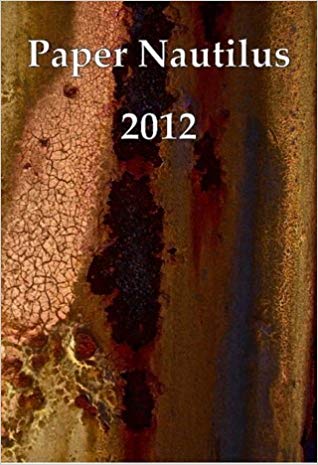
Lisa Mangini (Editor), Kimberly Burnham, Jason Primm, S D Stewart, Paul David Adkins, Jefferey Alfier, Martin Balgach, Janet Barry, Kristen Berkey-Abbott, George Bishop, C L Bledsoe, Duncan Campbell, Melissa Cannon, Darren Cormier, Matthew Denvir, Jacob Edwards, Laren Eyler, Jessica Forcier, Amy Gentile, Jason Hibbitts, Marianna Hofer, Nicole Hospital-Medina, Ann Howells, Marcia Hurlow, Jennifer Roth Jackson, Susan Johnson, Hillary Kobernick, Jean LeBlanc, Kathryn Locey, Edward Manai, Karen McPherson, Kelly McQuain, Zackary Medlin, Ann E Michael, Jesse Minkert, Mack J Mitchell, Brian D Morrison, Rich Murphy, Mike Petrik, Will Pewitt, Frederick Pollack, Melissa Reddish, Stephen R Roberts, Jay Rubin, Michael Saleman, Shae Savoy, Carolyn Foster Segal, Amanda Sibernagel, Gerald Solomon, Jessica Stilling, Doc Suds, Wally Swist, Allison Tobey, Brendan Walsh, William Wells, William Kelley Woolfitt, Mike Wright, Changming Yuan, Sheri L Wright. (2012). Paper Nautilus 2012. Published by Paper Nautilus.
A Storied Career: Kathy Hansen's Blog to explore traditional and postmodern forms/uses of storytelling.
Read my May 16, 2012 interview here. http://astoriedcareer.com/kimberly_burnham_q_and_a.html Kathy Hansen: I encountered Kimberly Burnham during the recent Reinvention Summit 2, in which she was featured in a showcase of selected members of the “tribe.” She has a fascinating story, as well as intriguing ways of applying her story and story in general to help clients. Kimberly, the author of the upcoming book, The Nerve Whisperer, Create Your Life Through Brain Health, teaches people how to heal and change the story their nervous system is telling about chronic pain, lack of healing and autoimmune dysfunction. Featured with other thought leaders, her Pearls of Wisdom, 30 Inspirational Idea to Live Your Best life Now chapter, “Fractals: Seeing the Patterns in Our Existence”, offers a unique perspective on pattern recognition and how we can improve our brain health, memory and physical enjoyment of life by observing what changes, while seeking to understand the world around us. “The Eyes Observing Your World,” in Christine Kloser’s Pebbles in the Pond: Transforming the World One Person at a Time tells a remarkable story of vision recovery, offering hope for anyone with a potentially blinding condition, migraines, chronic pain, or immune dysfunction. Visit her online at her site. Kimberly Burnham tells her story of vision recovery here at a Books-a-Million book signing for Pearls of Wisdom. Q&A with Kimberly Burnham: Kathy Hansen: You use your own story of vision recovery and the stories of your clients to inspire hope in people with genetic and neurological disorders. Can you talk a bit more about how you do that and the effect doing so has on clients? Kimberly Burnham: When I was 28, working as a professional photographer, I found myself in an ophthalmologist’s office getting a diagnosis of keratoconus, a genetic condition of the cornea. He told me I might go blind, and since it was genetic, there was nothing I could do. It was depressing at first, but during a particularly bad migraine while in massage school, a profession you don’t have to see, to do, I found the courage to say, “This is not okay.” The diagnosis and symptoms propelled me along a journey into complementary and alternative medicine, where I found my own answers — I am migraine-free and have the best vision of my life right now at 54. People diagnosed with a genetic condition want hope. Sharing stories of healing gives people a different way to think about it, encourages them to seek out their own answers and find solutions. Today I see a lot of adults and children with genetic conditions. Sometimes people disparage what I do by saying, “It is just the placebo effect.” If my clients with genetic conditions and brain dysfunction feel better, move in a more balanced way, have stronger joint and muscle function, improved vision, hearing, and energy levels all because of the placebo effect, I am good with that. Kathy Hansen: What is the framework or your particular definition of “story?” What definition do you espouse? Kimberly Burnham: Stories can change, even the story our physical body is telling, sometimes shouting. I work with clients clinically. I have a PhD in integrative medicine and am certified in integrative manual therapy, matrix energetics, and health coaching. The people I work with don’t like the story their body is telling. They want a new experience of the physical particles making up their joints, muscles, heart, and brain. The body’s story is constantly evolving. If you look at a person they look more or less the same from one moment to the next but they are not the same. At each point of transition in time, the story can change. Even at a bony level the cells of our skeleton are completely different when compared to seven years ago. Our skin cells are completely different from a few weeks ago. So why do we look more or less the same? Because the story our cells are telling is the same, the environment they are born into is the same, the experiences and level of communication they attain are the same with access to the same resources and voice. Albert Einstein said, “We can’t solve problems by using the same kind of thinking we used when we created them.” If you want a different experience of your joints, of brain clarity, of vibrancy, start telling a different story when someone asks, “How are you?” Change your environment, the food you feed your cells, the oxygen you draw into your lungs, your blood flow pumping through your heart on its way to the liver, to the brain, to the spine. Change something if you don’t like what you have. Kathy Hansen: You said in an interview, “As I write my stories, I see my life in a fresh way. I see what I have learned from different experiences. I see what I have to share that can inspire others. I see the patterns emerge. Writing about your experiences is so important, as is sharing your talents and learning, but ultimately you must have experiences.” How have you seen this story writing and pattern recognition get results for clients? Kimberly Burnham: Writing and telling my own story has been so beneficial for me because I have started to see the patterns, the way the peak experiences in my life connect creating a continuity so that each experience gives me a glimpse of what is possible and prepares me for this present moment. For example, I have a strong connection with Japan. My father was in the US Navy off the coast of Japan when I was born. Twenty-one years later I went to Japan as a missionary for the Mormon church. Finishing university back in the US, I returned to Japan with my girlfriend to teach English. I studied shiatsu, a kind of Japanese body work and learned about meditation and Buddhism, while I was there. I have Japanese pears growing in my Connecticut garden. At Bo Eason’s Personal Story Event, one of the “10 Coolest Things About Me” was, “I speak Japanese.” I am not yet at the end of my life, but I see a current running through it. Japan connects my religious heritage and my chosen meditation practice; it colors my worldview and the way I see the potential in people. I have learned a lot about my inner strength through my connection to Japan. I joke that I am Japanese. The word for a Japanese person is “Nihonjin” and can mean, “land of the rising sun person”, literally “root sun person” but also “two legged person”. The joke is funnier in Japanese, which I speak, and that means — I can do anything. In Christine Kloser’s book, Pebbles in the Pond, Transforming the World One Person at a Time (May 20, 2012), I tell my story of vision recovery and share some of my experience with clients — the miracles I have seen. Writing my story and then telling clients, family, social-media friends, and perfect strangers about it has forced, or at least encouraged, me to see the gifts in my vision-disorder diagnosis and how that propelled me into a search for answers, which has been, I see now, an incredible journey. The telling has been powerful because I am embodying a story of what can change, and every cell in my body is listening to me reinforce my belief in my ability to heal and everyone’s ability to transform their lives. I believe it gives people hope that their physical reality can change, positively influenced by the stories they tell themselves and the story their nerves and sensory body is telling them. I often ask clients to send me an email about what has changed, what is better a few days after a treatment session. This request does two things. One: they are consciously connecting experiences and looking for what is better. Two: they are writing, telling a story of what is healing, spiraling in a positive direction. You can get tremendous insights by looking for how you are connected to what is good in your life. Often the last place I touch on a client is an area that feels good rather than where they have pain. I make that the last place because they leave the clinic thinking about that place where they feel good. And that changes everything. Kathy Hansen: What people have most influenced your story work recently and why? Kimberly Burnham: I am presently in Laurie Wagner’s Telling True Stories course. Her “wild writing” is transformative, freeing the stories inside by writing as fast as possible, messy, juicy, without editing until it is all there on the page. The gems that come out magnificent. Laurie also turned me on to Ellen Bass’s narrative poetry, “What if you knew you’d be the last to touch someone?” What story would you tell? Michael Margolis’s Reinvention Summit in April 2012 showcased three minutes of my story of vision recovery and my ideas on how consciously telling your story of healing is vital. Tell your story, knowing that every cell in your body is listening, responding to the stories you tell yourself and others. My favorite quote from Michael was: “Storytelling is a kind of pattern recognition.” Published last year, my messenger mini-book, Our Fractal Nature, a Journey of Self-Discovery and Connection seeks to shine a light on the patterns, the changes that occur at each iteration of the story of your health and healing. Every cell in your body is an information seeking pattern detector, listening as you tell the stories of your past and imagine the future. Your cells are constantly seeking to uncloak the secrecy, share information and find worthy resources. Earlier this year, I spent precious moments with 50 Pebbles in the Pond authors and remarkable writers at Christine Kloser’s Transformational Author’s Retreat. Not only did we tell our stories, we deeply shared our dreams, hopes and vulnerabilities. By speaking of what we had experienced, what we had come through as well as how we transform our lives, we created community. Entwined in Bo Eason’s Personal Story Event, I enjoyed the “Tell us the 10 Coolest Things About You” exercise and the Timed Storytelling exercise. Facing the man across from me, I have three minutes to tell my story. Moving down the line with two minutes for my story of vision recovery and migraine relief, I talk faster trying to massage more syllables into the ticking seconds. Moving again. One minute. My tongue can’t go faster, my heart must choose the words with the most impact. I look at each story in the 300 pages I prepared to be here. If I knew I had only one minute to have a positive impact on you, what story would I tell? What offering of myself will have the greatest healing impact? In Writing Down the Bones, Natalie Goldberg explores, “it takes a while for our experience to sift through our consciousness. It is hard to write about being in love in the midst of a mad love affair. We have no perspective. It’s not yet in our body.” Writing, telling, talking and listening I gain perspective. I share my voice so you and I and others may live better — see more clearly. In Matrix Energetics, the Experience, developed by Richard Bartlett, I use two points to explore the particles of experience, mine and yours. I feel into the waves of possibilities, tapping into the quantum physics field to find the story of change, of healing, of vibrancy. I mentally time-travel forward and backward to exploring how the story of the past can change and how the story of the future can develop. Photons and sounds moving all in the service of quality of life, of creative expression, and of love and light. I am the master of what I create. There are no victims here, as I tell my life, grateful for the experiences, sharing what I have learned, sharing what can to help another on their journey, sharing the ways we can journey together in peace and joy. Kathy Hansen: If you could share just one piece of wisdom about storytelling with readers, what would it be? Kimberly Burnham: The placebo effect is the result of storytelling. It is the story the patients tells themselves about the benefit of a particular substance or treatment. It is the story the doctor, researcher or healthcare practitioner tells the patient about their future, about their recovery. Are they believable? Does the way they tell the story of healing benefit the patient or does it create a nosebo effect? The nosebo effect is when you believe something bad will happen as a result of a substance or treatment. When a doctor tells someone with cancer they have six months to live, I believe he or she is using storytelling to curse the person. The power of clinical stories should not be taken lightly. In one of my favorite movies, The Last Holiday, Queen Latifah’s character is told she will die from a brain tumor, and there is nothing she can do. She sets off to spend all her money doing things she has always wanted to do but didn’t take the money or time. It turns out she was misdiagnosed. The movie is really about how a person living fully, passionately, holding nothing back can do amazing things. Here is a poem I wrote about the placebo effect in my own life. Controlling the Uncontrollable Only nothing is nothing: placebo psychology plays in your electric brain physiologic effect in my blazing body is not nothing Only the placebo effect white coat scientists mock my alternatives You feel better, pain-free She dances stronger, hips flexible Tottering becomes balance, a credit to all powerful placebo I can live with that, I am good with that Nosebo, placebo telling me I am, I have a wicked genetic condition Saying there is nothing I can do anything professional photographer going blind This is not okay! Alternative medicine solutions migraine-free years genes without change better vision than 40 Seeing the pattern of flow Avoiding the car accident by a hair. Placebo storied pattern recognition new stories as every cell listens telling hopeless doctors I see you, placebo my eye |
Medium Blog
Home of the Daily Peace Challenge. Learn about world peace - one word and one language at a time. (c) Kimberly Burnham, 2022 The Meaning of Peace in 10,000 Languages Looking for grant money to complete this peace project
Kimberly Burnham, PhD (Integrative Medicine)
860-221-8510 phone and what's app. Skype: Kimberly Burnham (Spokane, Washington) NerveWhisperer@gmail.com Author of Awakenings, Peace Dictionary, Language and the Mind, a Daily Brain Health and P as in Peace, Paix and Perdamiam: an Inner Peace Journal To Stimulate The Brain Kimberly Burnham, The Nerve Whisperer, Brain Health Expert, Professional Health Coach for people with Alzheimer's disease, Memory Issues, Parkinson's disease, Chronic Pain, Huntington's Ataxia, Multiple Sclerosis, Keratoconus, Macular Degeneration, Diabetic Neuropathy, Traumatic Brain Injuries, Spinal Cord Injuries, Brain Health Coaching ... Contact Kimberly Burnham in Spokane Washington (860) 221-8510 NerveWhisperer@gmail.com. Chat with Kimberly about Parkinson's, Poetry or other Brain related issues.
Not Taking Advantage of Your Amazon Author's page?
Kimberly Burnham helps authors get their books out into the world more broadly by improving their free Amazon Author's page and book pages, posting a book review on her blog and on her LinkedIn Pulse blog (over 12,000 followers) Promotion packages start at $50. Contact her at NerveWhisperer@gmail.com. See her Amazon Author's Page. See her list of publications including her latest book of brain health meditations, Awakenings: Peace Dictionary, Language and the Mind, a Daily Brain Health Program. 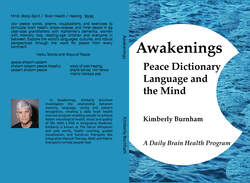 Look Inside on Amazon Look Inside on Amazon
Now Available: AwakeningsPlease share and write a review on Amazon.
Poet-In-Residence Position
I am looking for guest blog opportunities and a position as poet-in-residence. My current project is writing dictionary poems using words in different languages for the English word "peace." You can read some of my poems on Poemhunter . As poet-in-residence I would write poems on different words in different languages and broadcast them throughout the social media blogosphere. Each poem would link back to your site where the word or language appeared. I would expect some sort of stipend and a six month to one year placement. Please contact me for details if your organization is interested in having a poet-in-residence to help get your message out. Nervewhisperer@gmial.com Buy the print or eBook, review Awakenings then contact Kimberly for a free 20 minute brain health consultation. Email or Phone
(Regular rates $120 per hour or 10 sessions for $650.) (Integrative Medicine)
|
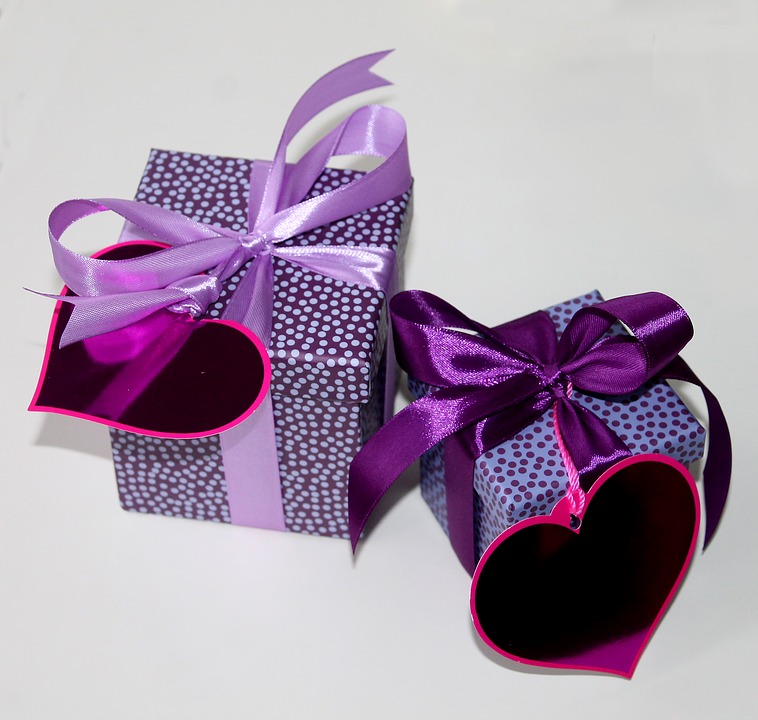

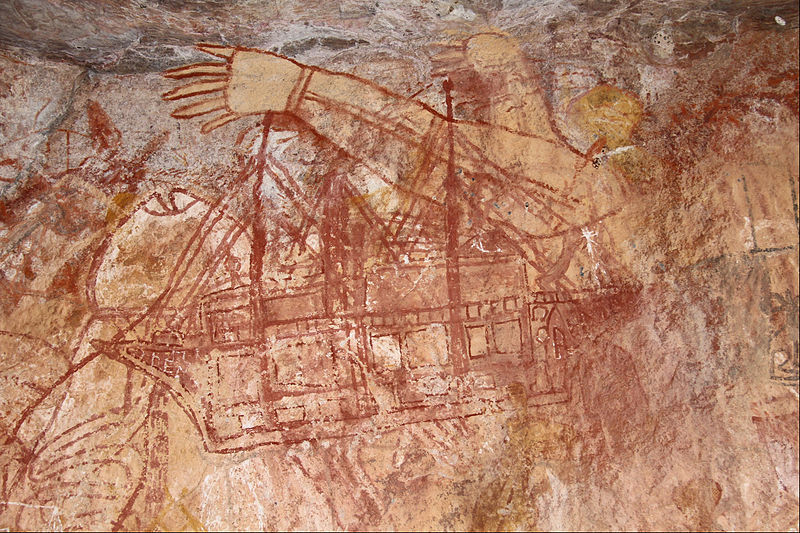
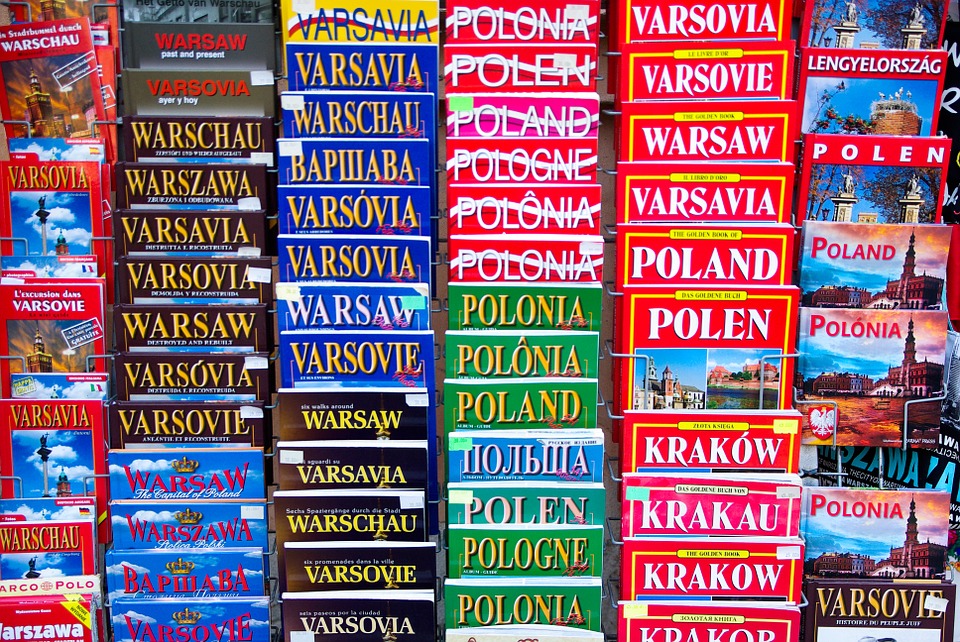
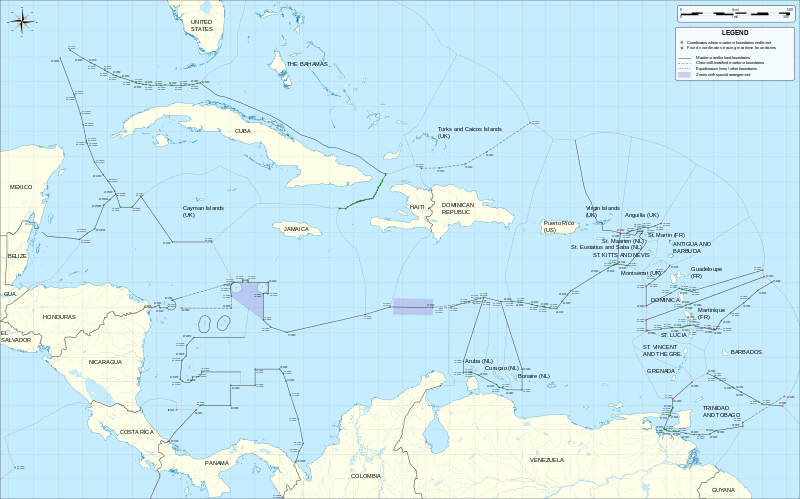

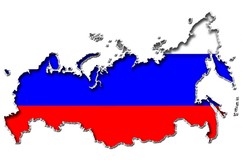
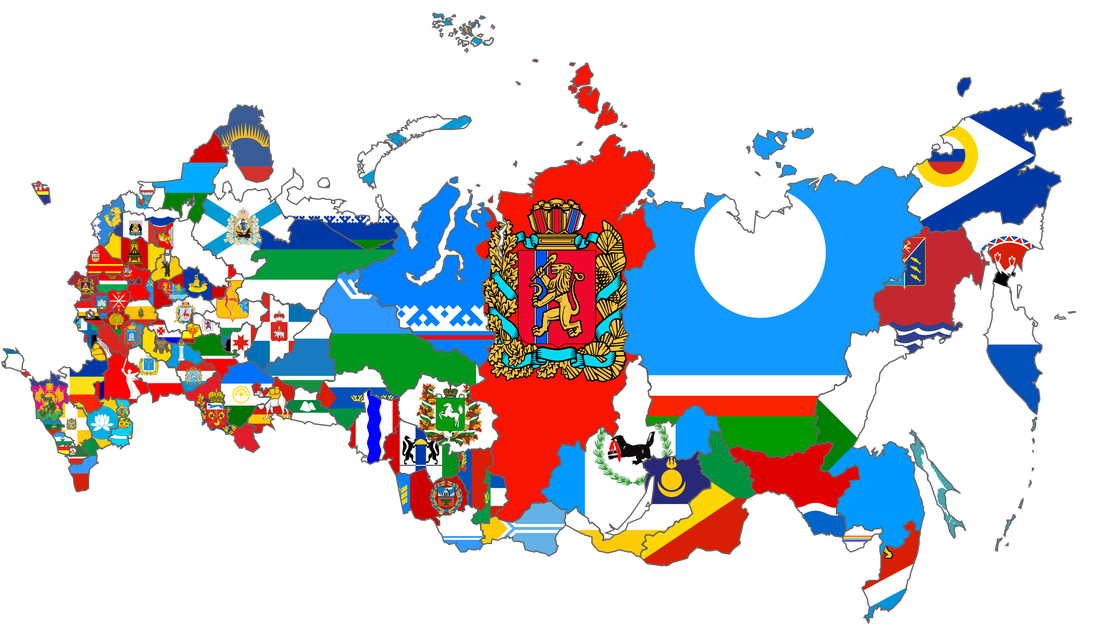
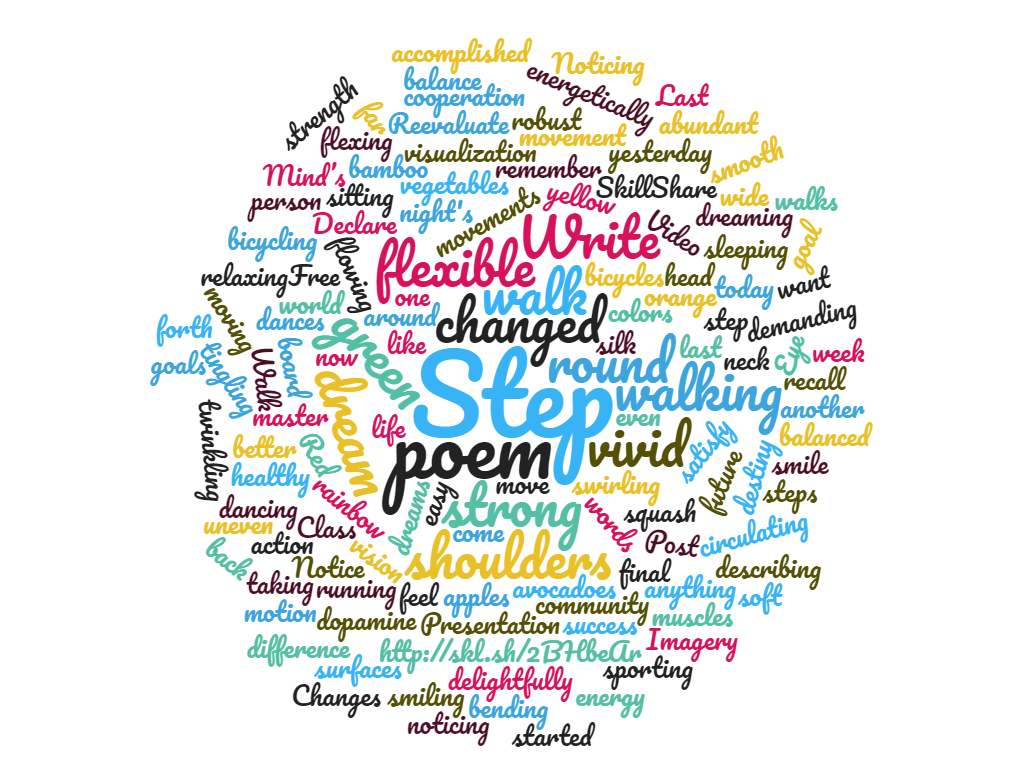
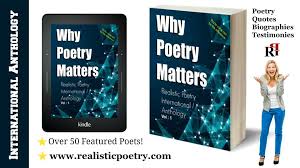
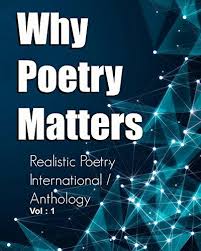

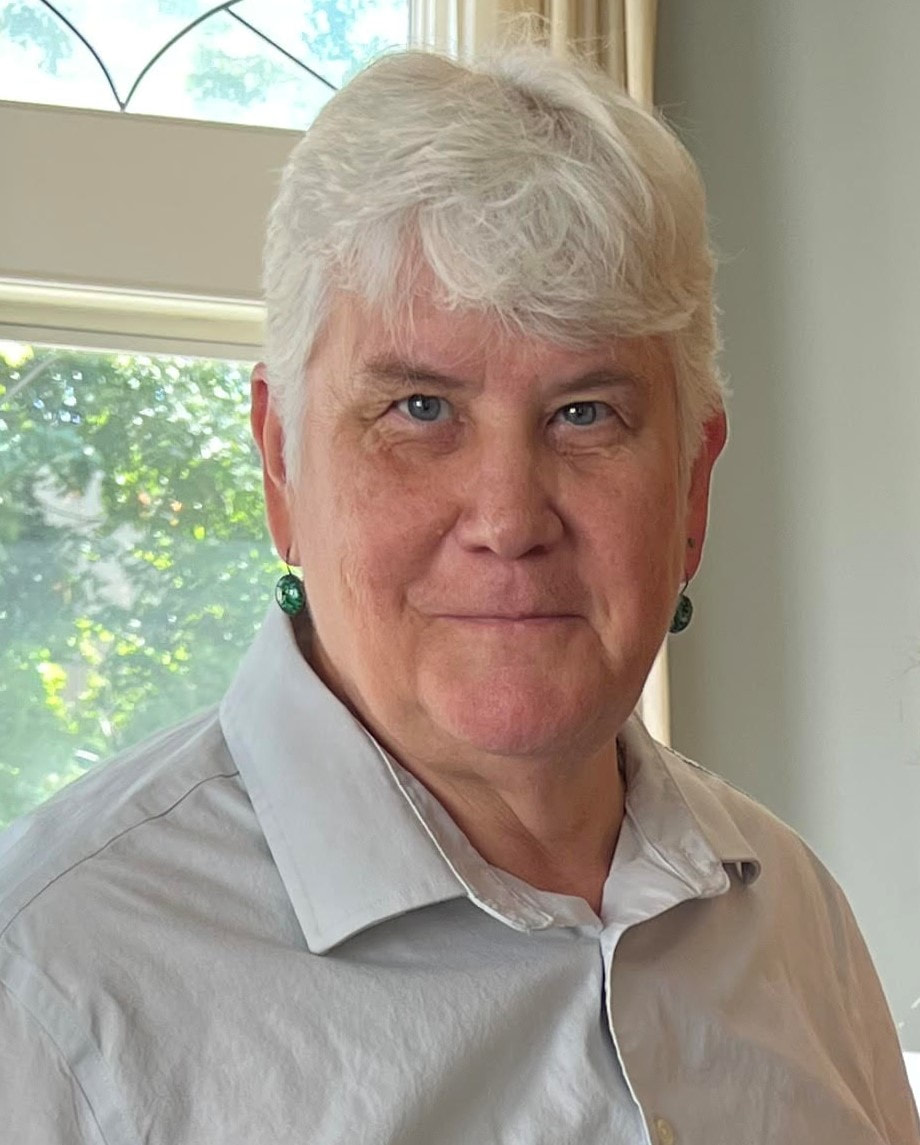
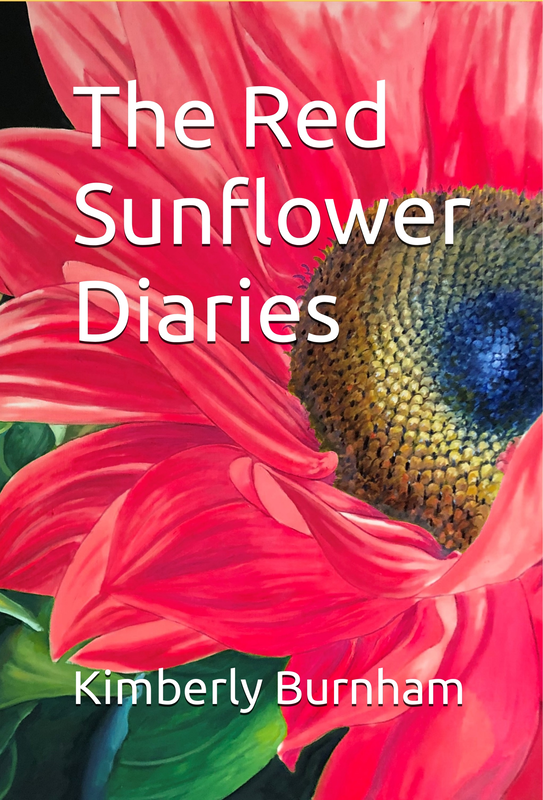
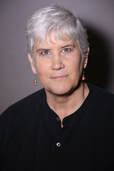

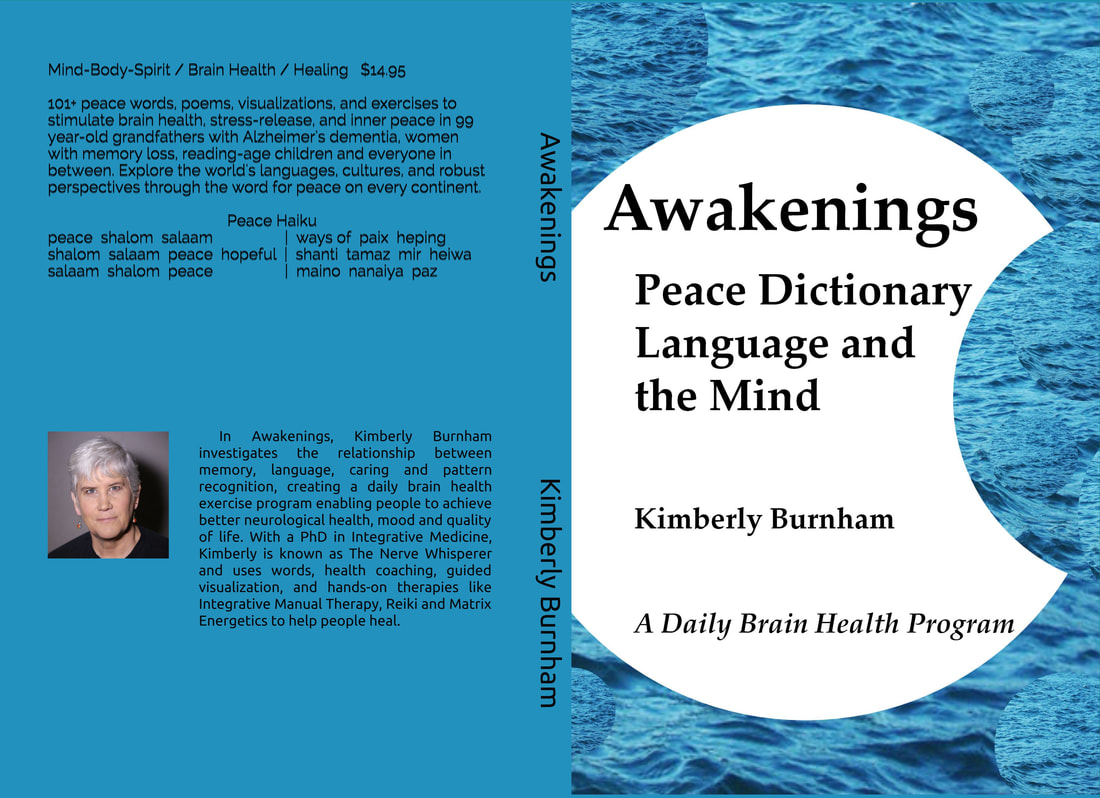
 RSS Feed
RSS Feed
